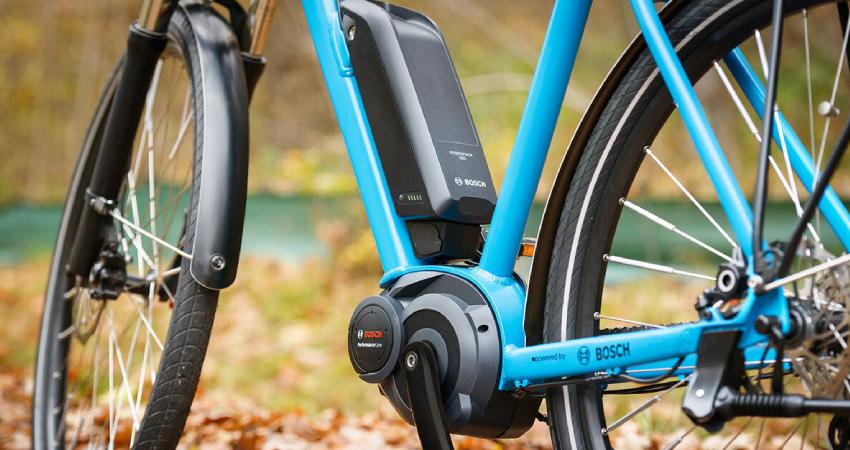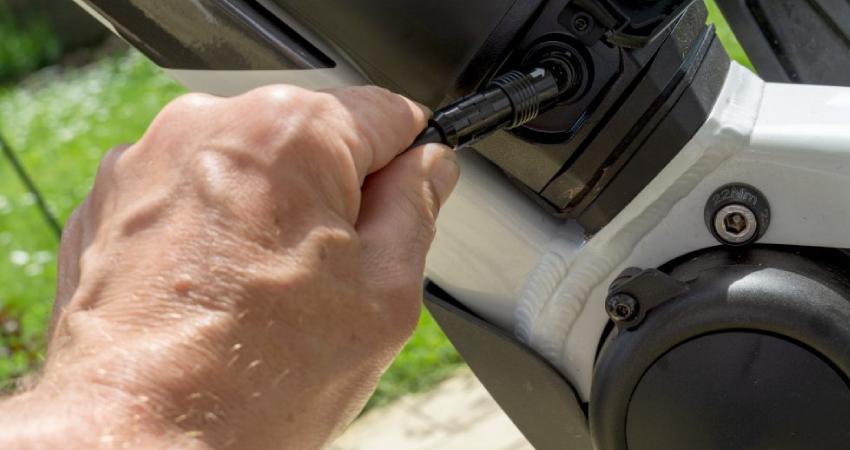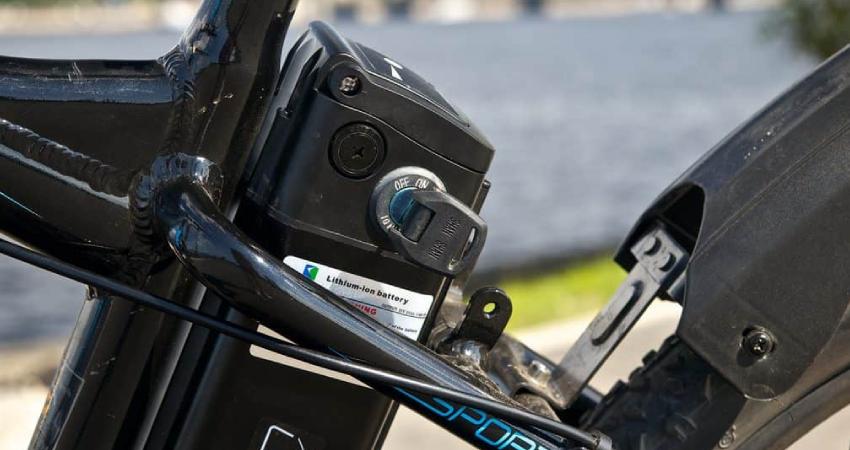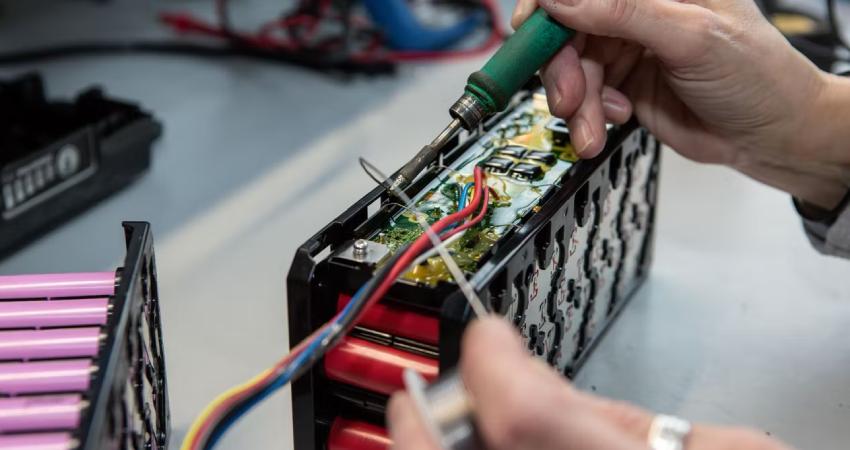Quick search
The chances are high that you bought an electric bike last year. In recent years, the number of electric bikes has increased enormously. Cargo bikes, longtail bikes, and other electric cargo bikes are also very popular nowadays.
You might not think about it, but the way you charge your electric battery affects its lifespan. In this article, we’ll look at how to best charge your battery, what things to avoid, and what to do when you’re not using the e-bike.
The best batteries for electric bikes
Every electric bike has a battery. The quality depends on the materials used, often you can determine this based on the brand. Brands differ in quality and capacity. Sometimes they also have other advantages, such as a larger capacity or autonomy. Especially the lifespan and charging are important whe

Safely Charging Your Electric Bike
It’s best to charge indoors in a clean environment. If you have a built-in battery, this may be difficult. If you can remove the battery, it’s best to do so. Although the bikes are made to be used outdoors, the chargers are not. Keep them indoors, clean, and dry.
The charger (from Bosch) also has a built-in sensor. This analyzes the battery to ensure that it is safe to charge. Too hot or too cold, and the charger will not work to protect the battery. Therefore, also avoid using universal chargers (at your own risk), as they will not respond as well to this.
Maintaining the Range and Lifespan of Your Battery
Your battery has a wattage. Bosch batteries are usually 500 Wh, while Shimano goes for 504 to 625 Wh. The wattage is important for your range; the more Wh, the further you can ride. The more efficient the motor, or the more you pedal yourself, the further you will go.
On average, you get about 10-13 km per 100 Wh. So much depends on your usage, bike type, and motor. But you can take this as a (preliminary) rule of thumb. Most bikes have a 500 Wh battery and can ride an average of 40-50 km. With a double battery, you can reach about 100 to 130 km. For heavy cargo and cargo bikes, this is somewhat lower.

The lifespan indicates how many charging cycles the electric bike can withstand. By using the battery, it will eventually lose some capacity, reducing the range.
Current batteries have 500 to 600 full charging cycles before they start losing capacity. Again, depending on the brand and quality, this may be more or less. We take Bosch as the standard.
These 500 charging cycles correspond to three to five years, depending on your usage. After this, the bike is not broken. Although a new battery can make it feel like new again. This shows that the lifespan, capacity, and range are all interconnected.
A less obvious factor is the speed of pedaling. Good electric motors have sensors that measure how much power you exert. They calculate how many times you pedal per minute and adjust accordingly by providing extra assistance.
This is especially important with bikes without automatic gears. If you pedal too slowly in a heavy gear, the electric motor will have to compensate too much. This also affects the range and lifespan.
The bikes also have different modes: Eco, tour, sport, and turbo. If you always ride in turbo mode, the battery will run out of charge faster and wear out more quickly. With turbo, you can count on 400% extra power. Wear and tear are therefore only logical.

Common Mistakes that Damage Your Battery
There are several things we often do wrong when using batteries:
- The first charging cycle
- Completely draining the battery
- Not using the battery
- Overcharging
- Undercharging
- Leaving it in the charger for too long
- Exposure to heat and cold
A battery doesn’t last forever. But you benefit from a longer lifespan. Afterwards, you can simply replace your battery with a new model. When the time comes, you can read about it here.
First Charging Cycle
When receiving the electric bike, it’s best to fully charge the battery as soon as possible. This is because the battery has been in storage and may not have been used for a while. The myth that you have to fully charge the battery every time is false. You can safely go out with 80%.
0% Battery
Draining your battery completely is also not recommended, says Kapoor. By letting the battery run completely empty, the battery itself can be damaged. Once the damage is done, the battery will never charge to 100% capacity again.

Storage
If you’re going without biking for a few weeks, disconnect your battery and store it in a dry place at room temperature. Ideally, the battery should have a charge between 30 and 60 percent at this time. Use the battery occasionally and charge it to avoid complete discharge.
Charging Behavior
Also, avoid leaving a battery unnecessarily plugged in. It may keep charging the last few percent continuously, which again affects the battery’s lifespan. If you’re going months without using the battery, it’s best to keep it above 30%. The most important thing is to avoid complete discharge.
Charging after every ride may seem logical and convenient. This way, you have a full battery for your next trip. However, this is not recommended. Use the same battery for several days if possible. Charge it when you know it’s necessary for the next ride.
Too Hot and Too Cold Aren’t Good
You may have noticed that batteries provide very poor range when it’s very cold. Conversely, being too hot is also not good. Sometimes the bike may even refuse to turn on. Lithium batteries shouldn’t suffer much from this, but it’s just the way it is.
A battery can also be damaged if it stays below freezing for too long.
Similarly, if it remains in direct sunlight during a heatwave, permanent damage can occur. There have also been incidents where the battery became so hot that it caught fire. Timely intervention is important, although it doesn’t get very hot in Belgium very often.
Fast Chargers and Lifespan
Fast charging is also known in electric cars. It’s a convenient way to quickly replenish your battery. We also often see it with electric bikes. You can charge up to 50% of the battery in one hour.
Here too, it’s important to know that there are not only advantages. A fast charger provides a quick electrical boost, supplying a lot of energy in a short amount of time. Although the battery is designed for this, it affects the entire system. Fast chargers reduce the lifespan of your battery, but they do provide enough energy to complete a journey.
Pros and cons, a trade-off you have to make. But of course, you need to know about it first.

Can the Battery of an E-Bike Catch Fire?
The likelihood of your electric battery catching fire is low, says Kunal Kapoor of Bosch. As a precaution, it’s best to keep an eye on the battery while charging. Also, keep it away from flammable objects to eliminate all risks. Of course, his advice applies to Bosch equipment and doesn’t speak for cheap unbranded motors and batteries.
An electric motor and battery are approved based on a UL2849 stamp. This is well known in the industry. Therefore, only buy electric bikes that have this approval to be sure.
So it’s not impossible for a battery to catch fire. It can happen, but it’s fairly rare. Prevent a fire by intervening in time. If the battery feels too hot, stop charging.
If there is still a fire, immediately call the fire department. Do not pour water over the fire, as this will cause further ignition. If possible, throw the battery into a metal bucket to contain the flames. Sand can also extinguish the flames.

